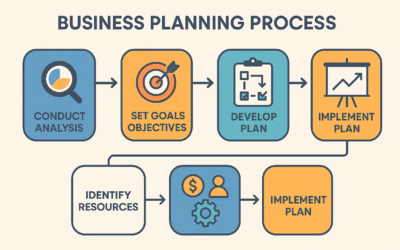Have you submitted a business proposal before? From a freelancer looking to nail down a new client to a business owner working to secure funds, a strong business proposal isn’t always straightforward.
With creating a business proposal, you have total control of how it goes right from the start. Although you can’t control how someone reacts to it, you can tweak the proposal to increase your chances of success.
Global Resources has six tips that will help you develop a strong business proposal.
Have a Goal Set
Before you start your proposal, ask yourself why you’re writing it? What are you hoping to achieve with the proposal? Basically, what is the reason for you reaching out to this potential client? It will help you stay concise and get straight to the point.
The Introduction Starts It All
What’s the most crucial part of a proposal? Yes, the information is essential as the client needs to know what the proposal is about. However, the introduction can make or break your entire proposal right at the start.
Your introduction of the proposal is the first thing the reader sees. It’s the first impression they see. You want to start with a bang to draw the reader into finishing the proposal. Clearly state what your intentions are and why they matter.
Explain Your Why
It’s one thing to present information and layout what you want in the proposal. You also need to explain the purpose behind it – what solution do you have to this potential problem your proposal could solve? How would you use said funds to further your business, so the client knows it won’t go to waste?
Your proposal is a quick way to show what you have to offer and how you plan to do it.
Be Clear and Concise
Your proposal isn’t the time to write a novel or test out your newest joke. The last thing you want to do is waste your client’s time with fluff and information that doesn’t pertain to your goal. Be concise with your intentions to keep the potential client’s attention on your words.
Make sure you’re also transparent with your intentions. Avoid any room for disagreements or miscommunication by clearly stating the point of your proposal.
Read From the Client’s Perspective
As you’re editing your proposal, try to read it from the client’s perspective. How would you react if this proposal was sent to you rather than the other way around? Would you be interested and want to move forward? Or, would you ignore it and send it to the trash?
Map Out What You Want the Client To Do
At the end of the proposal, you’ve hooked them in with what you can provide and why. Now, you need them to act on this information. Do that by stating precisely what you want them to do next. Is it a phone call? Include your contact information with when you’d like them to call you back by.
There is lots of pressure on a proposal because it’s how you can bring in new clientele. Make sure you don’t over-promise. Ensure that you’re accurate in what you can offer, so there’s no disappointment.

0 Comments